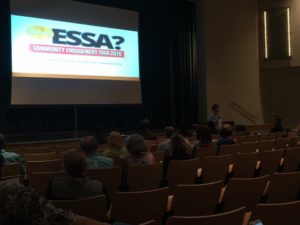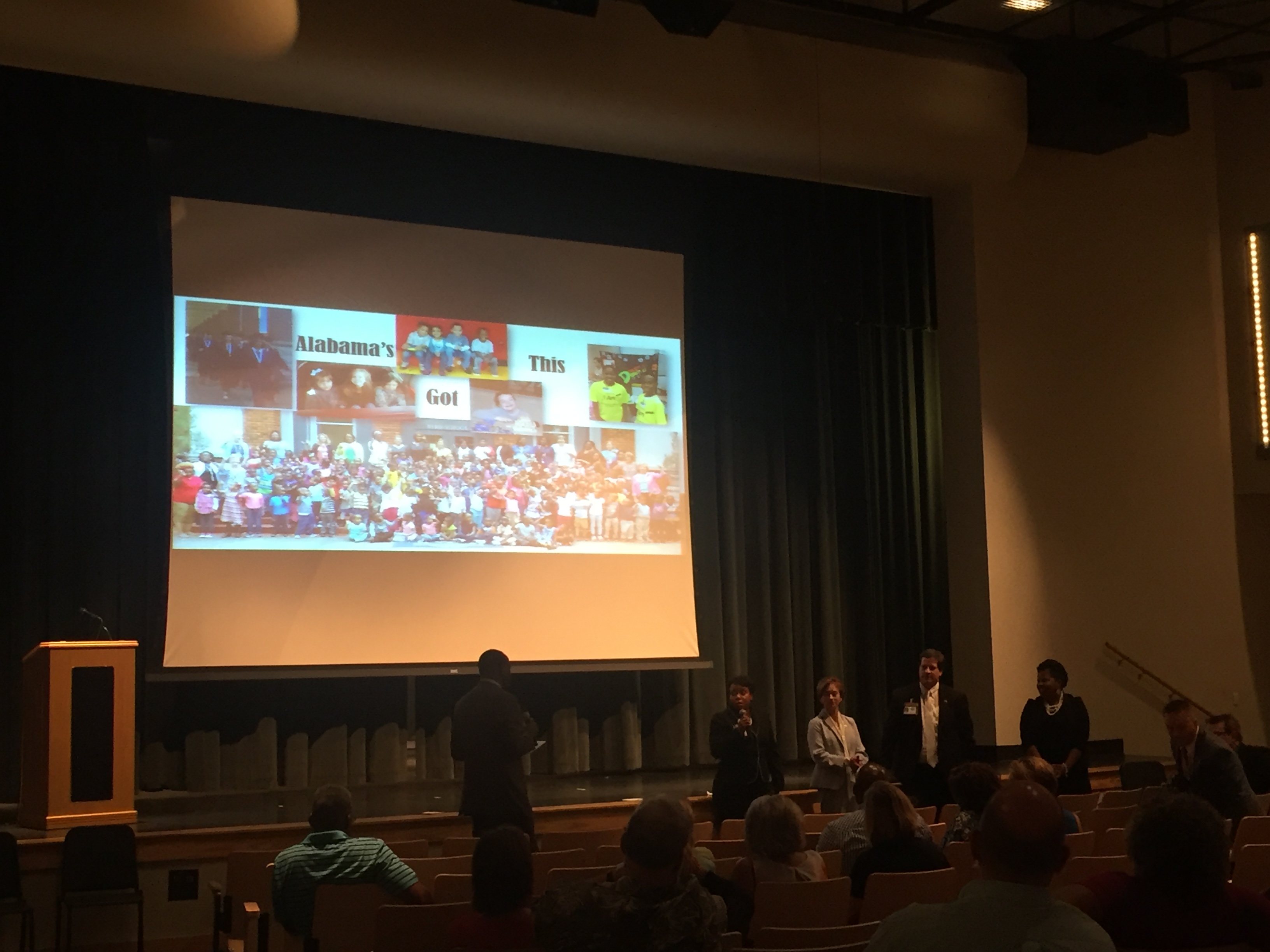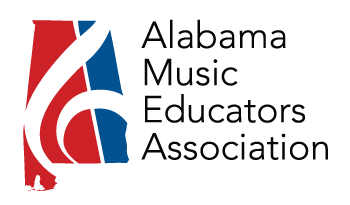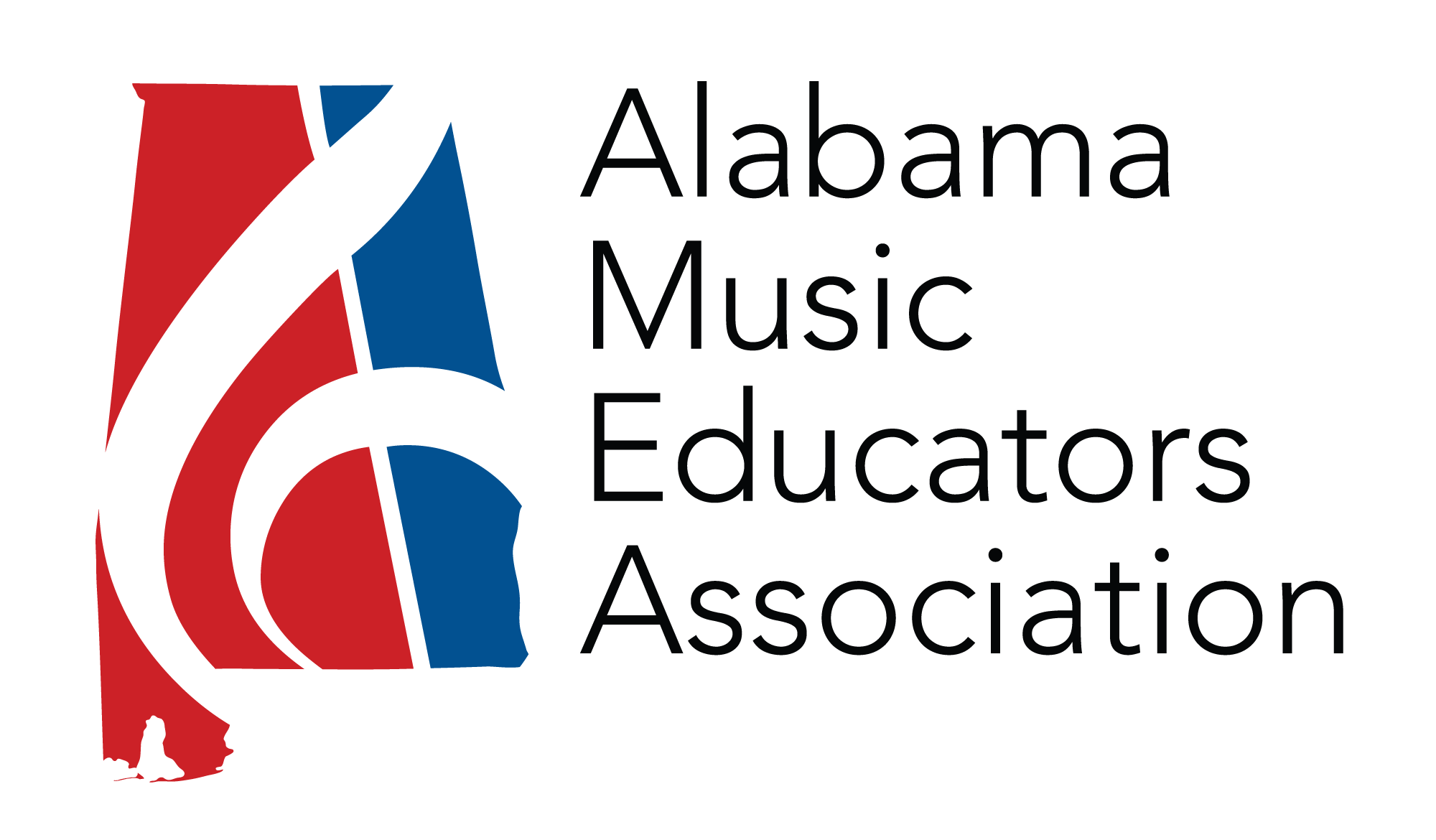 The following is a transcription of questions posed by Becky Halliday and one other attendee of the ESSA informational tour, which took place at Helena High School, August 18, 2016.
The following is a transcription of questions posed by Becky Halliday and one other attendee of the ESSA informational tour, which took place at Helena High School, August 18, 2016.
Panelists included: Philip Cleveland, Shanthia Washington, Jeana Ross, Mark Kirkemier, and Michael Sibley
QUESTION 1:
How can the state arts organizations such as AMEA support efforts toward implementation of quality, effective instruction in the arts areas?
KIRKEMIER: We’ve had some folks that have been with us from the first two stops. I think the other way is to continue to be a voice; continue to give. What do we think would be the best solution to this, I think Secretary Ross said it so well, if you have a thought or idea, submit it. Give it to us. How could this work? Especially if that’s your area of focus.
CLEVELAND: One thing I love about this group is, they have taken it upon themselves – a personal mission to go and raise money to enhance the arts education in Alabama. As I’ve met with them over the last couple of months, I mean, they come to the table with a plan, they come to the table not asking with their hand out, but with an action plan – ‘We’re doing this, what are you going to do to help us?’ rather than, ‘We need something.’ So, it’s a totally different attitude going forward with those groups, and they’re very persistent with their effort, and I respect that and appreciate that.
QUESTION 2:
Without the focus on “highly qualified,” how can we be sure that teachers in arts areas are certified in their discipline?
KIRKEMIER: So, you don’t have a federal definition of highly qualified, but that doesn’t mean we don’t have a…we’re, we’re the ones responsible for establishing what we feel like a highly qualified teacher in the state of Alabama relative to those things are – this is actually going to subgroups that reported out some potential definitions for what would be an unqualified person; what would be an inexperienced person.
CLEVELAND: Adjunct instructors in the arts is something that we feel is a great benefit and the state school board just approved this as an opportunity – Superintendent Fuller will tell you that there may be an opportunity where you can add a component of the arts, it may only be a part-time, it may be a two-hour opportunity for students to benefit in that area so the new teacher certification pathway around adjunct, it really opens a door for the arts and other specialty areas to expand across our state, witho
WASHINGTON: Just one other thing I wanted to add, as it relates to the arts, the other thing you want to keep in mind, is that you want to infuse art into the other disciplines; I know that many of you have heard about STEM, with having to become a fully certified educator, so I think you’re going to see that as a great benefit moving forward, which basically focuses on science, technology, engineering, and math, but there is also something that you’ve coined as STEAM, which also includes the arts. So, in doing so, that affords us the opportunity to integrate arts into those other disciplines as well.
QUESTION 3:
How can we make sure that children across the state of Alabama have access to music education at all grade levels?
KIRKEMIER: So, art and music need to be a part of the conversation and again, when we talk about supplementing the work that we’re currently doing, the things we currently have in place, those need to be things we continue to advocate for, for funding. State level funding. We can’t take this money, as Dr. Cleveland said, take the place of our absolute (unintelligible) do before, it’s really to supplement, not supplant, so I think that conversation still needs to be a conversation we need to have when we talk about funding, when we talk about what we want to offer in our schools, and what the priorities are.
In response to another question about funding for the Fine Arts (I’m not sure who asked this one, and I didn’t record the question itself):
WASHINGTON: As a result of that, you have to be cognizant of how the issues for certain programs. So, There is a Title IV part of the federal programs; I talked about the different titles previously, one definition of Title IV is that you can do what’s called a Well Rounded Student, that’s the focus of that particular area, so that’s one place in the law, not saying that’s the only one, but that’s one place in the law where you can use funding, uh, use arts as one of those well-rounded student definitions. So, as a result, now, when it comes to actually saying there will be additional teachers for that, that’s a whole other conversation altogether, because there again, you have to show what you have across the board in a school district; what you’re offering each one of those schools relevant to your local funds, your state funds, before you can use these funds to add to those funds. You have to show some equality across the system, which gets a little tricky to say you’ll actually be able to fund a teacher to come in. But, another component of the law also is that there is a component called Direct Student Services, that is new to ESSA, so Direct Student Services also looks at things such as opportunity across the state and across the district. In essence, is the same opportunity afforded in this school as is awarded in the neighboring school? So, there again, there’s a caveat there that you could potentially use funds to help close what – I want to make sure you remember the new term. It’s really not new, but the new term as it relates to this law, to help close opportunity gaps. Underlined is that, out of all these shown that these individuals can help relative to these programs can help relative to closing the achievement gap overall is what it talked about and that is to improve (unintelligible) students, but to provide a well-rounded education.
CLEVELAND: The state legislature, I always want to give credit where credit is due, they added a 500,000 dollar this year, they increased the arts budget by 500,000 dollars, that is not a lot of money, it’s a lot of money to me, but it’s not a lot of money when you have 137 school systems in the state, but there’s an appetite and an interest in the legislature to revisit arts education moving forward, so I just wanted to make you aware of that from a state perspective, when it comes to money.
Completed by Becky Halliday 08/18/2016
Audio was somewhat unclear due to acoustics, so some words were unintelligible.
INFORMATION: To learn more about ESSA, visit the Every Student Succeeds Act page on the Alabama State Department of Education website, the Every Student Succeeds Act Implementation Committee page, or click here. Follow the ESSA Community Engagement Tour on Twitter at #ESSAAlabama.


